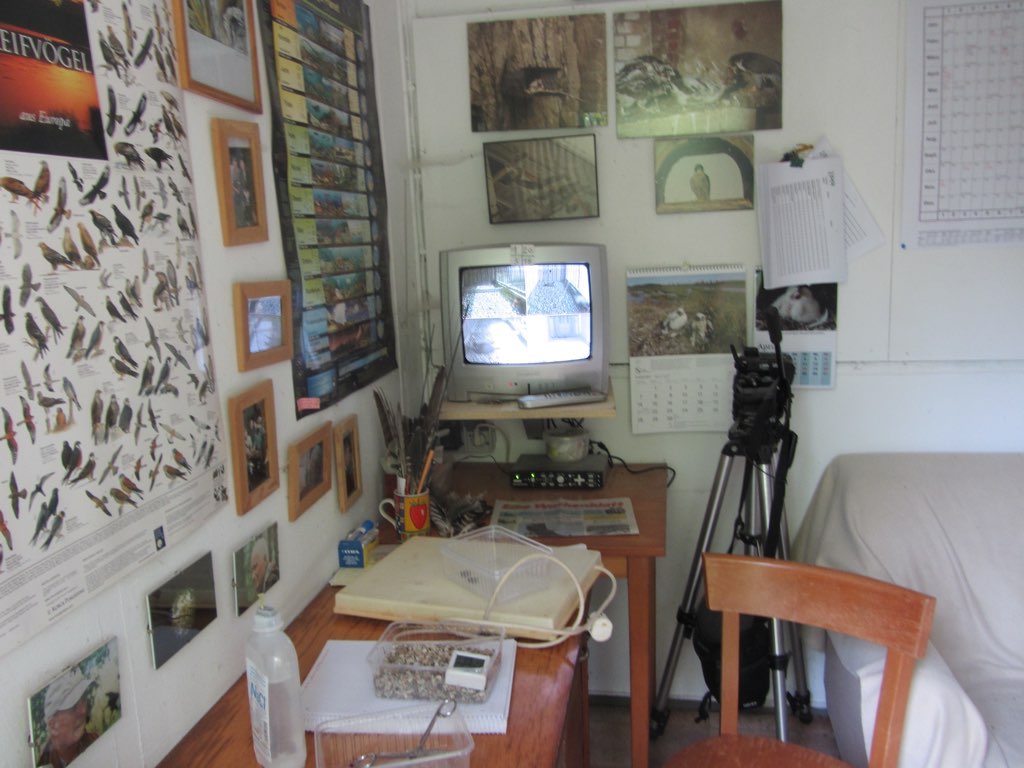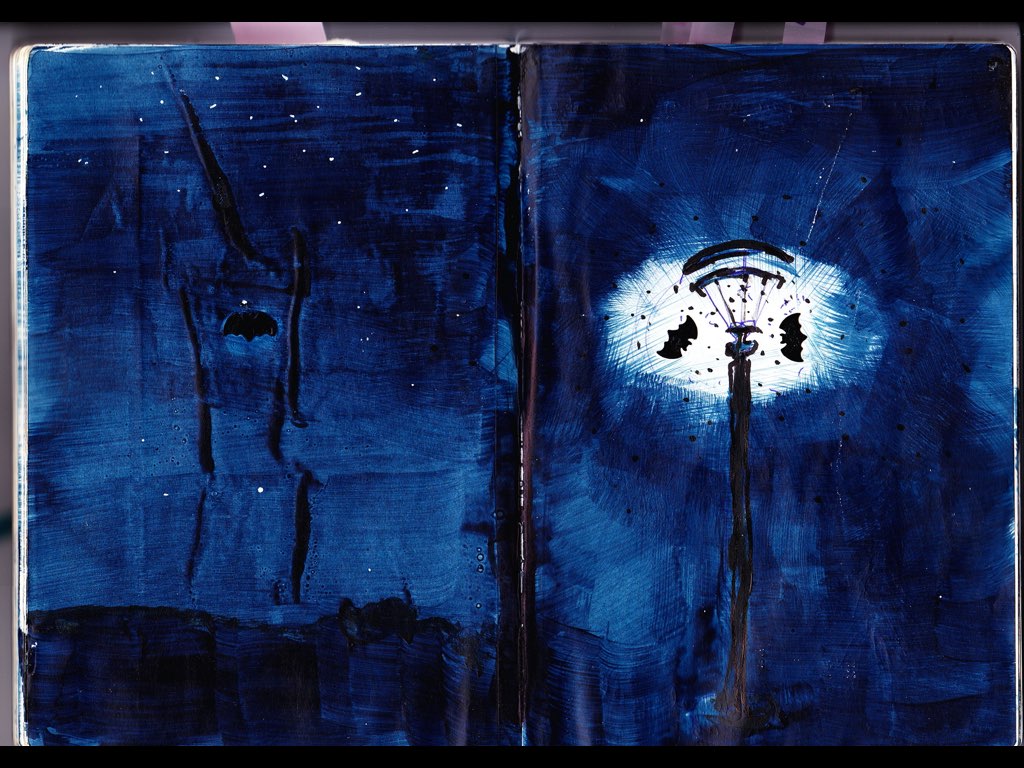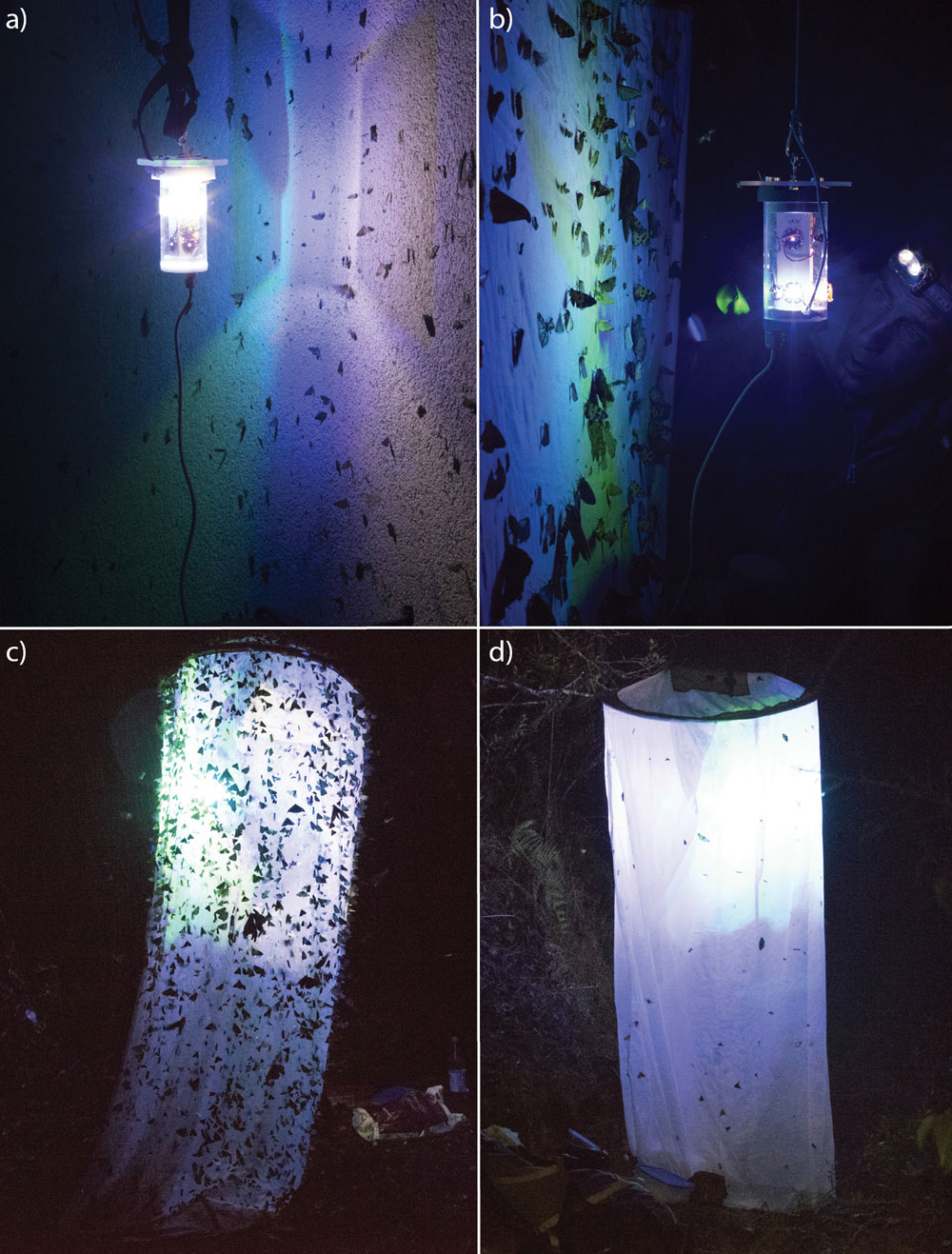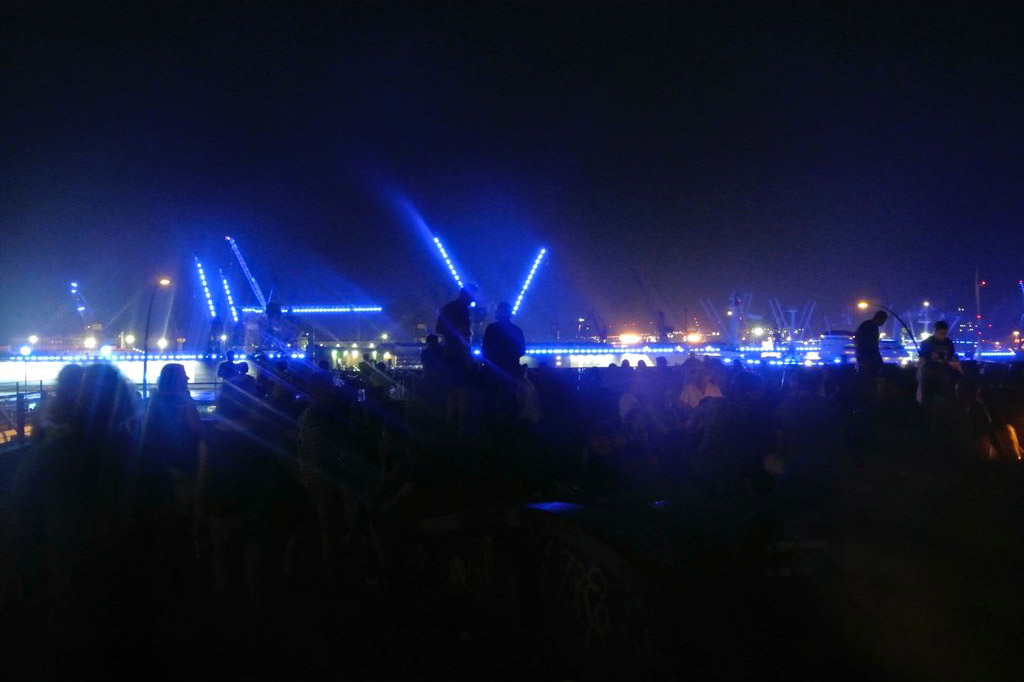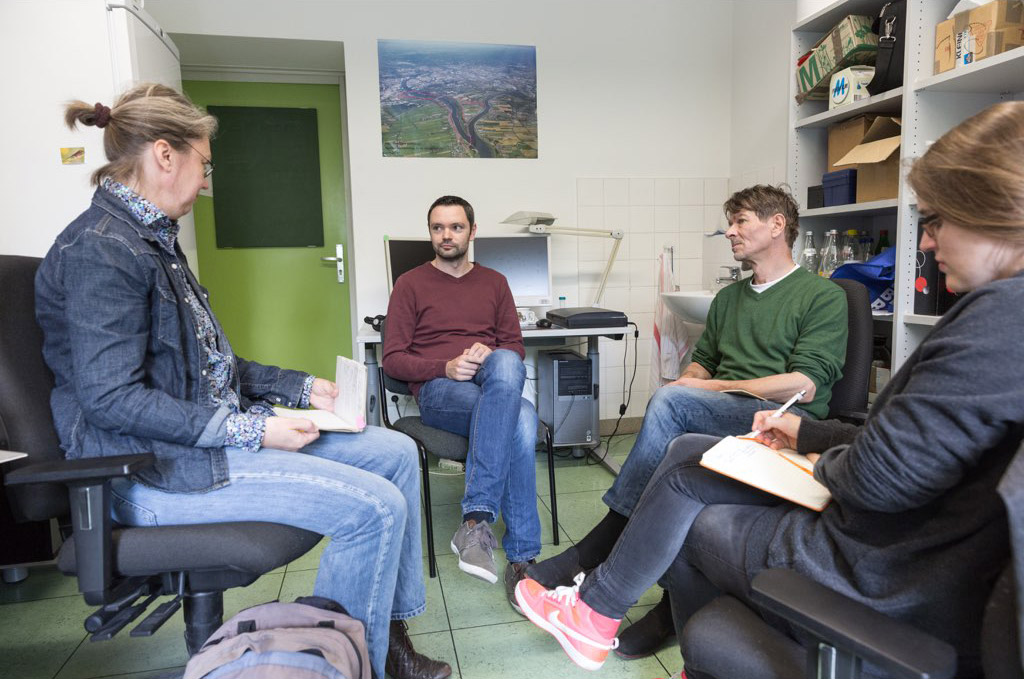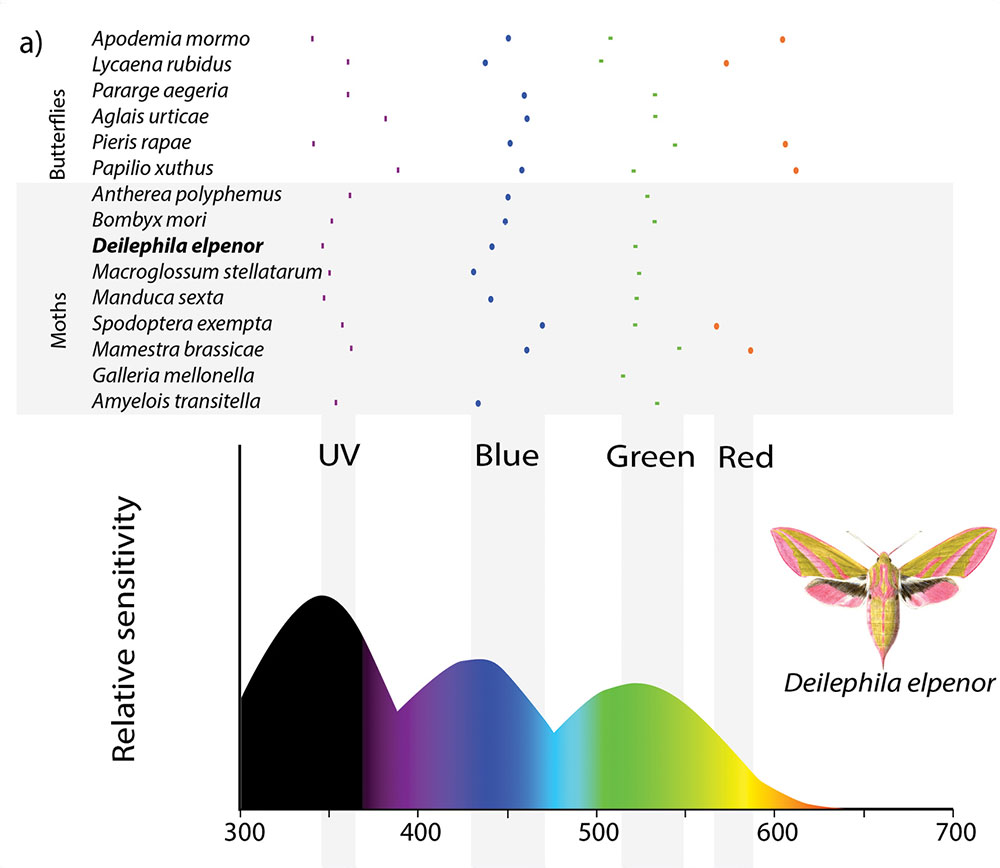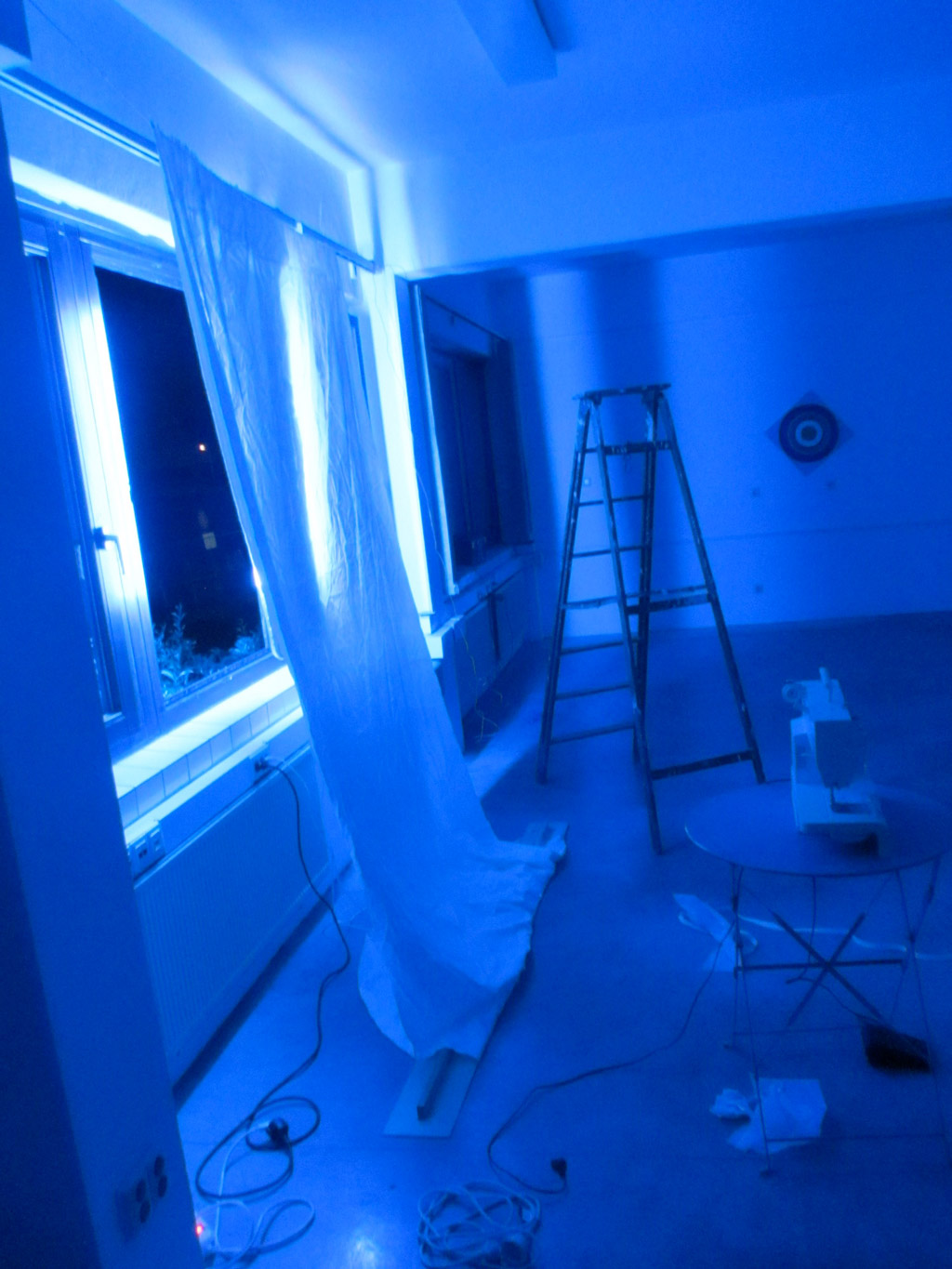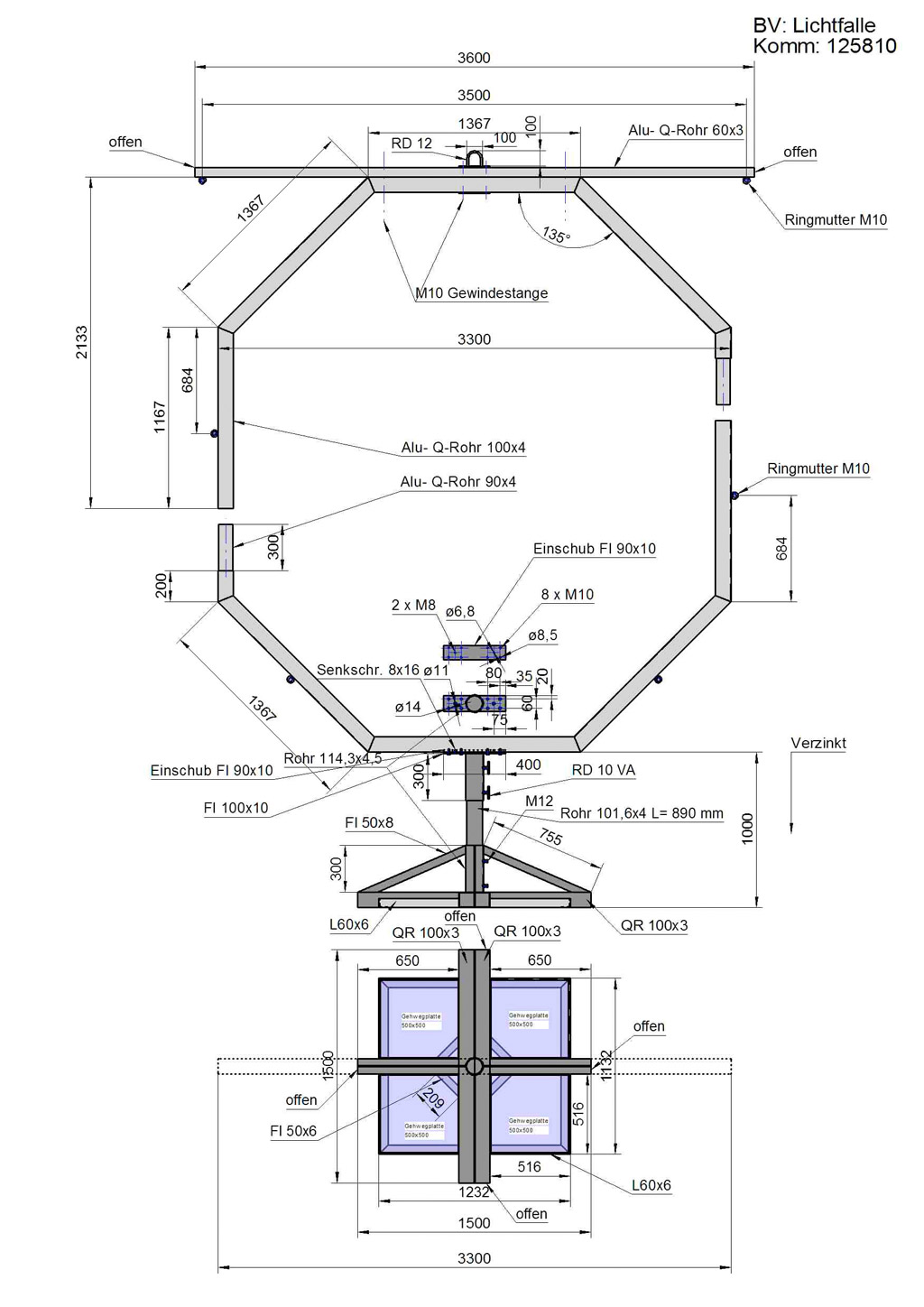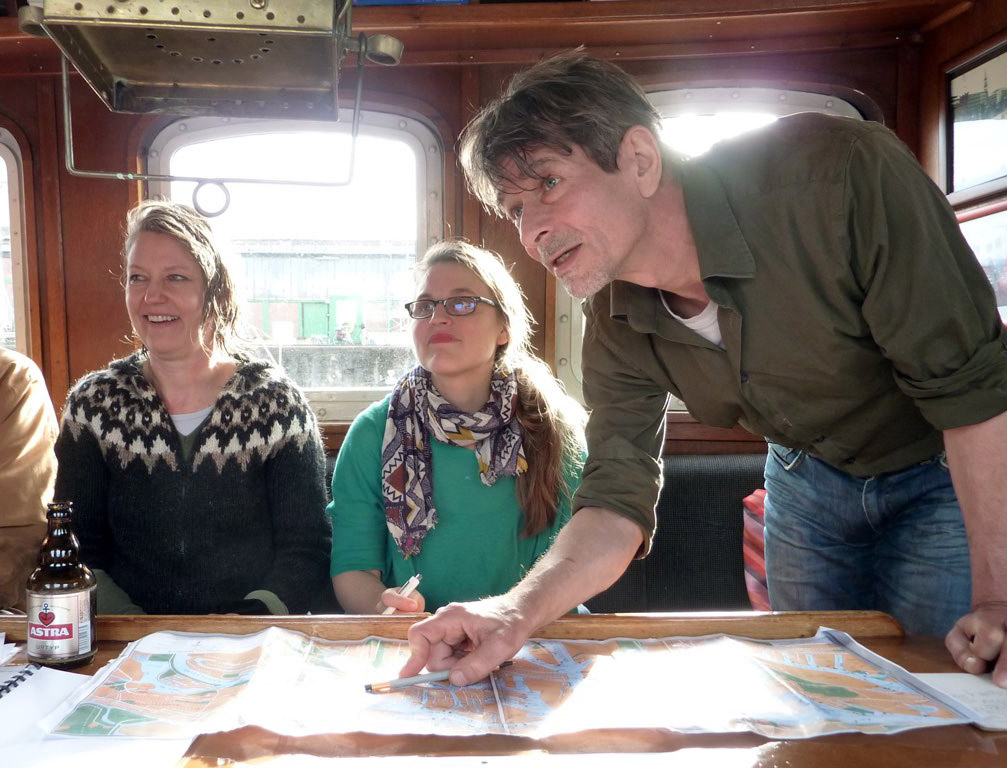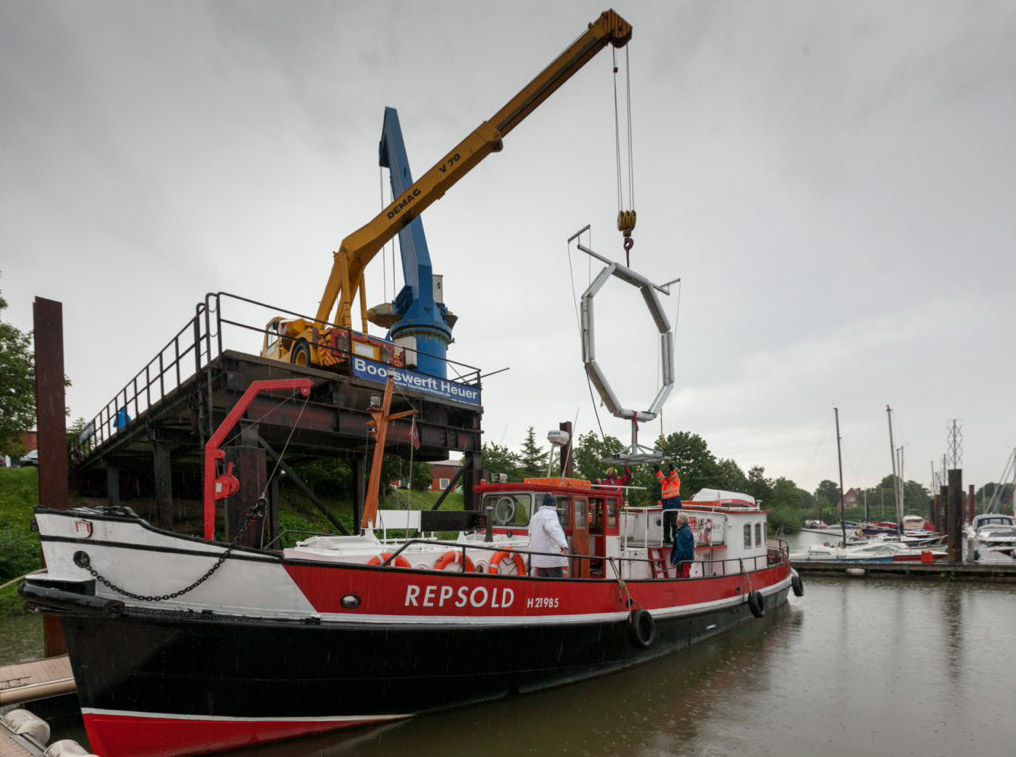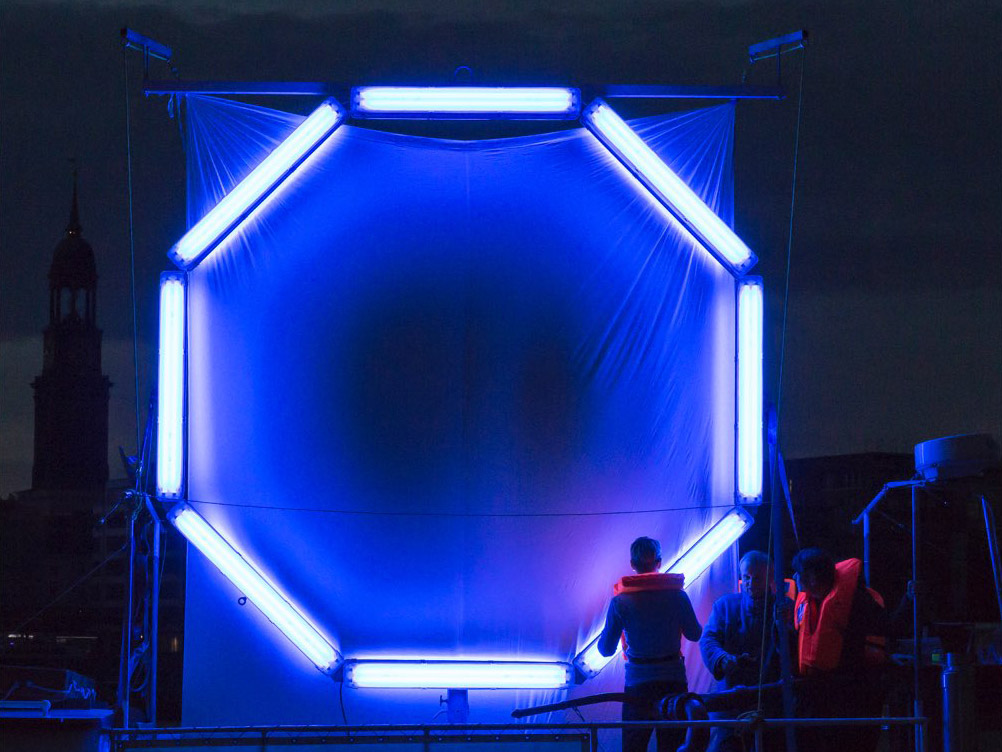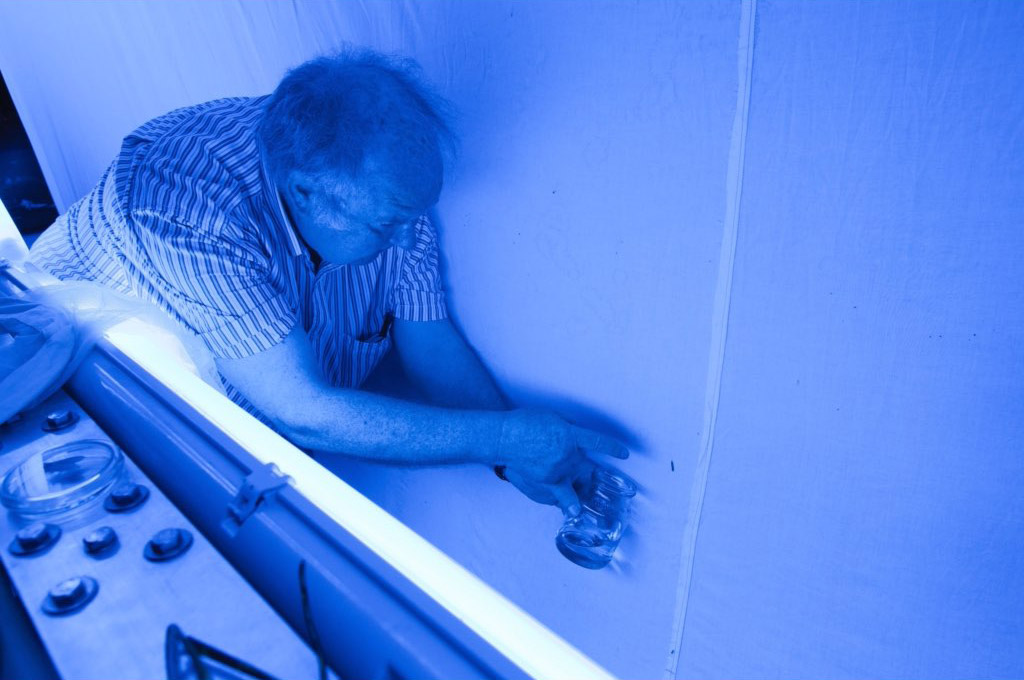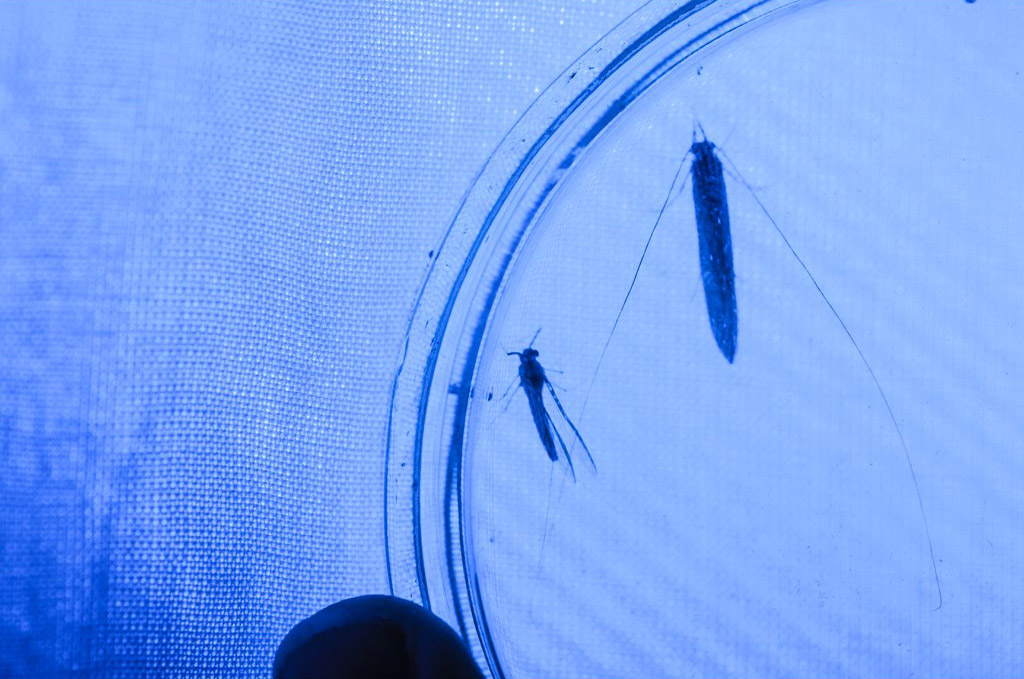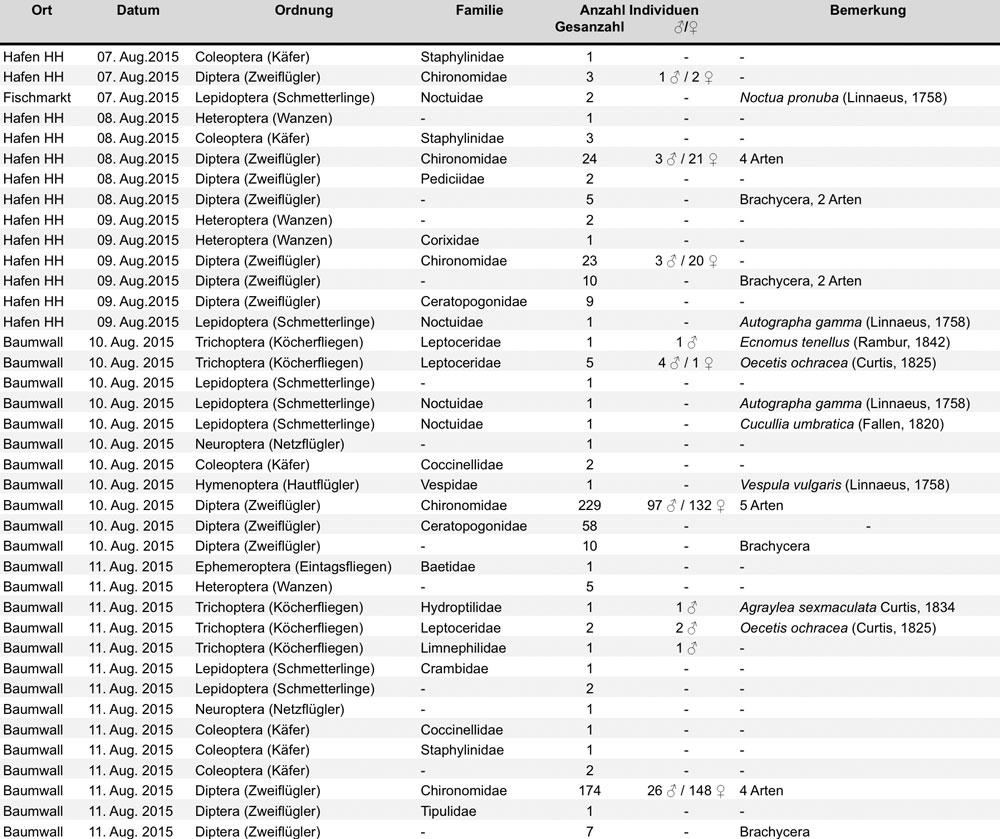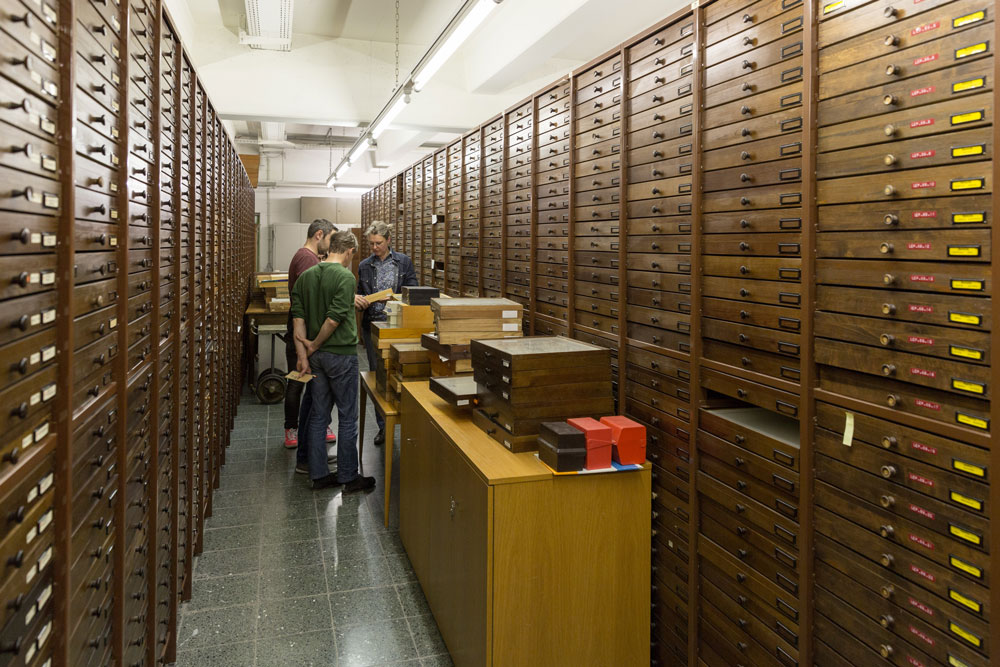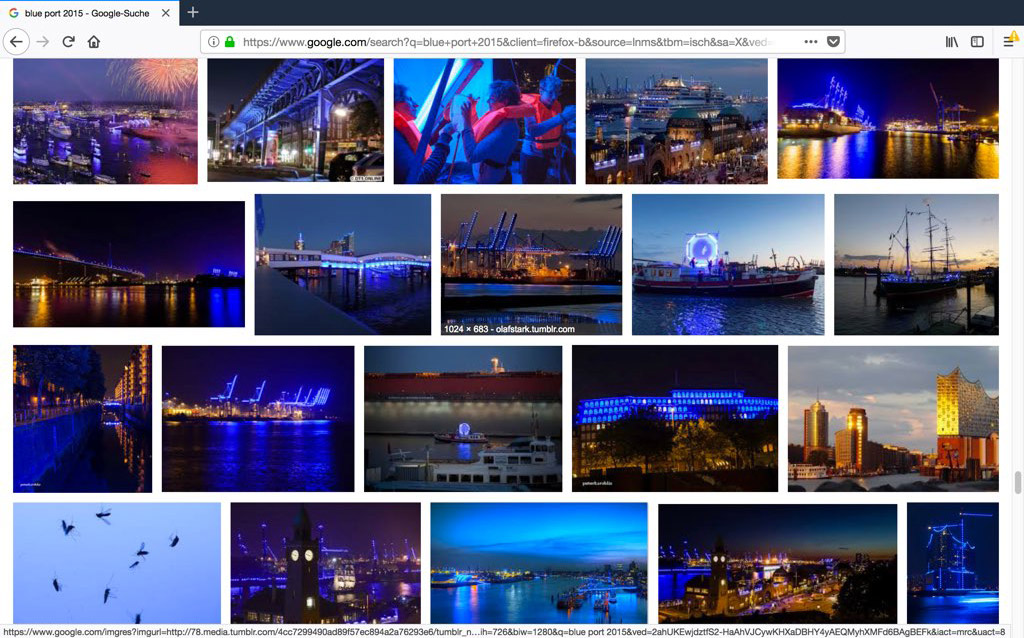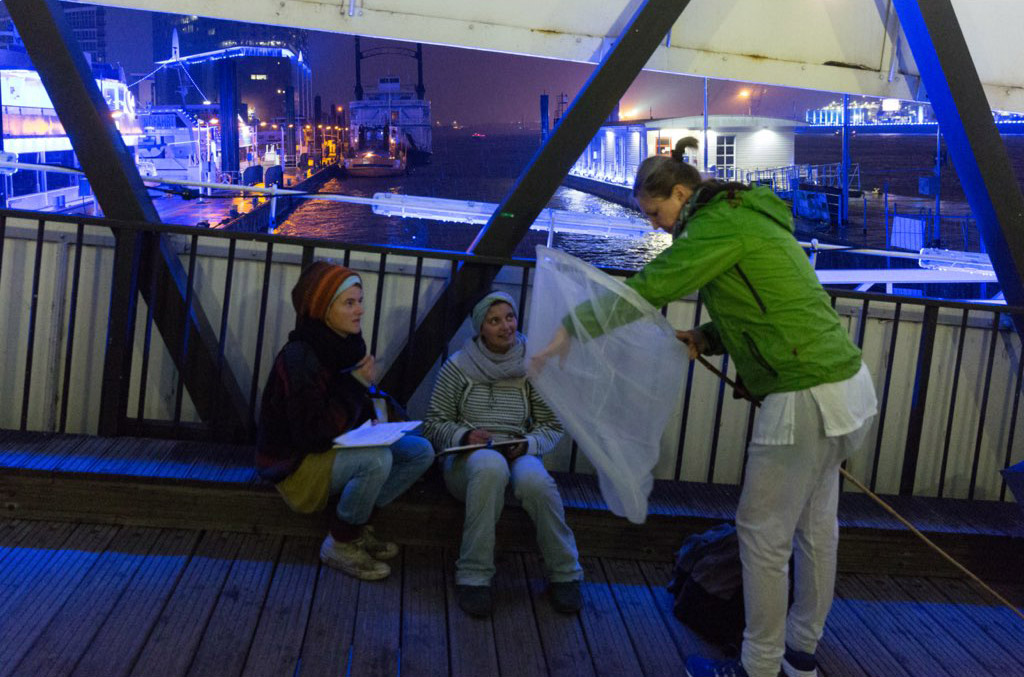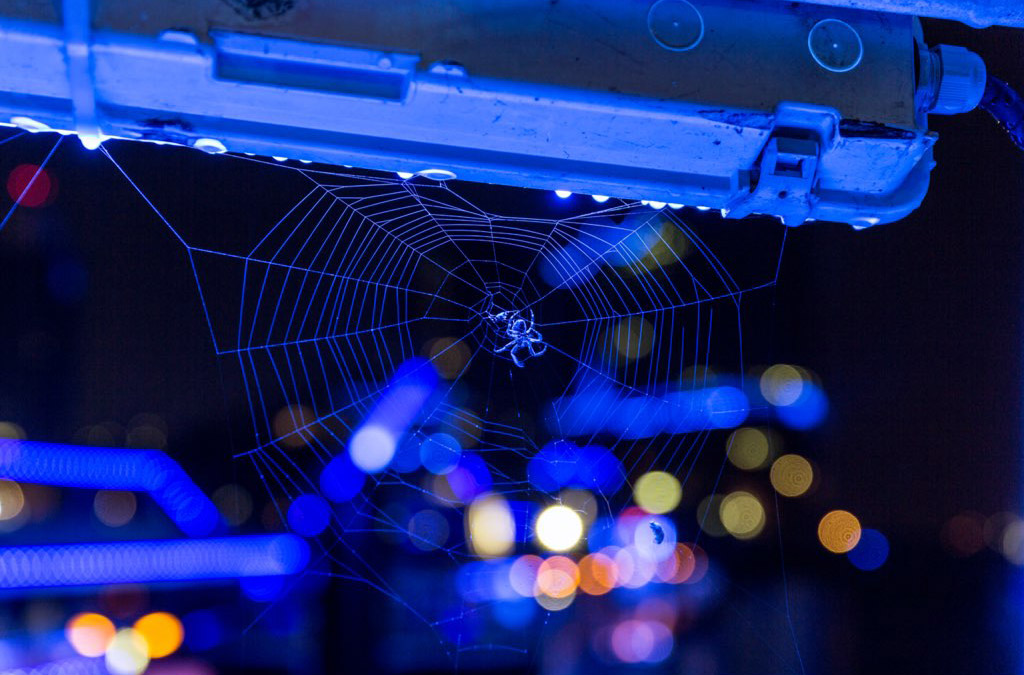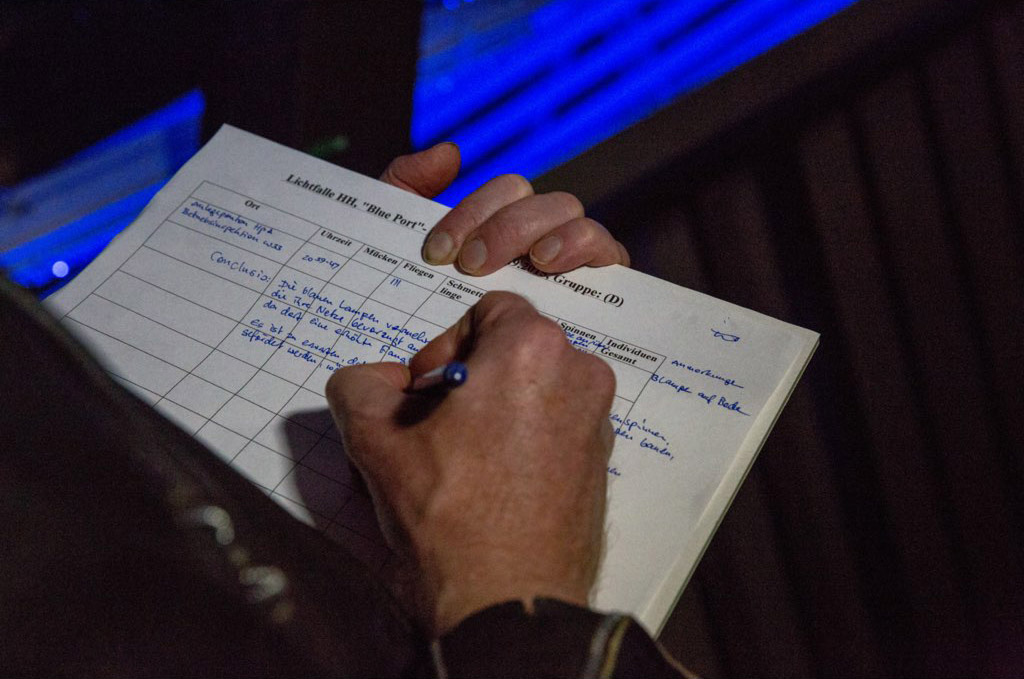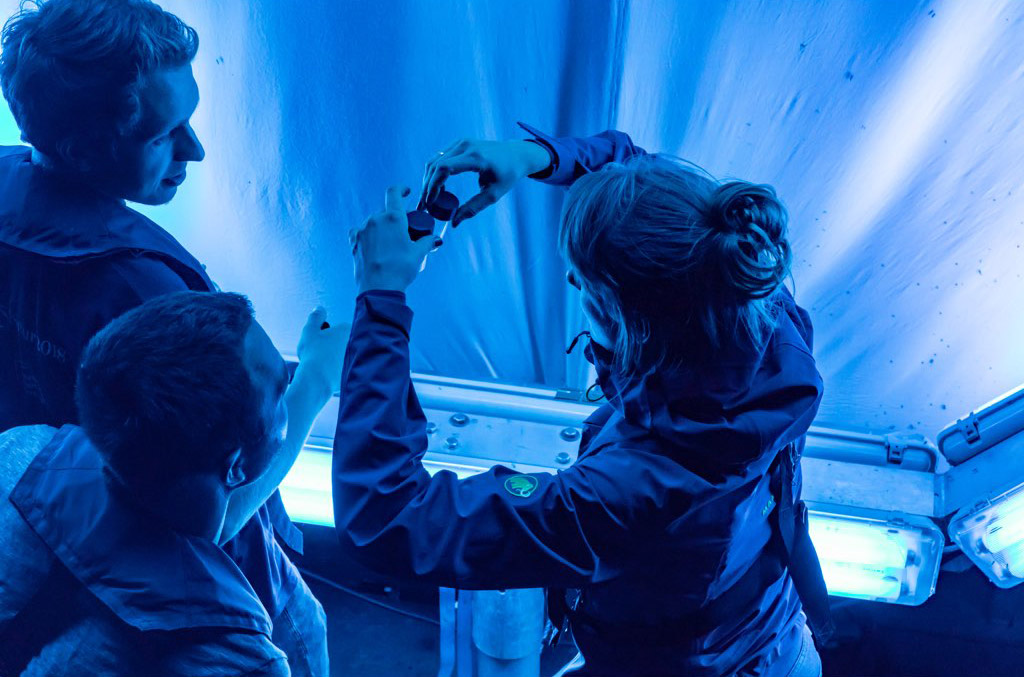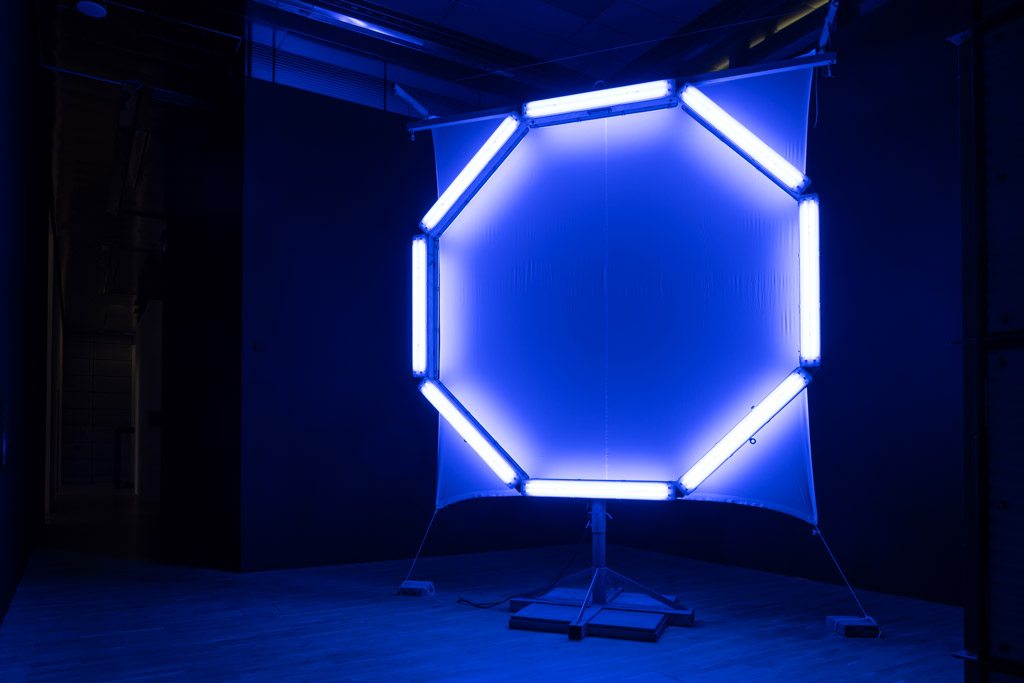Light Trap Hamburg
Light Trap Hamburg 2015 and Light Trap 2018: Temporary Light Installations in the Port of Hamburg – Examining the Impact of the Blue Port on the Diversity of Insects
In biological research light traps are used to make species counts. In the port of Hamburg, the so-called Blue Port is staged every other year in combination with the Cruise Days, an event organized by the Free and Hanseatic City of Hamburg to celebrate the cruise industry. By means of an aggressive light that makes people particularly awake, a contemplative “blue hour” is conjured up for a mass audience. This persistent situation inspired biologist Bernd Reuter and Nana Petzet to investigate the problematic psychoactive effects of the spectacle. They thus developed the idea of building a light trap with identical illuminants, placing it on a ship and exploring the area generally illuminated by Blue Port at night, accompanied by experts on nocturnal insects. Light Trap Hamburg was funded by the programme Art in Public Space of the Hamburg Cultural Authority and took place from Friday, 7 August to Tuesday, 11 August 2015 on the Norderelbe and in Sandtorhafen. On the initiative of the Center of Natural History (CeNak) at the University of Hamburg, a second trial was carried out in the same area on 15 and 16 June 2018, this time as part of the event Langen Tags der StadtNatur. As a result, it could be demonstrated that blue light is highly attractive for nocturnal insects. Light Trap Hamburg understands the current crisis of insects as an epistemic space in which the commodification of the night and biodiversity has become visible and, consequently, as an obligation to search for ways out of this commodification.
1 1 May 2014, the station of the peregrine falcon breeding and research project in Hamburg Duvenstedt
2 Some bat species have adapted to artificial lighting and take advantage of the increased food supply. Most species, however, strictly avoid artificial lighting.
3 Entomological light traps employed during fieldwork, from the study: Gunnar Brehm, A new LED lamp for the collection of nocturnal Lepidoptera and a spectral comparison of light-trapping lamps, published 2017 in Not Lepitopterologica
4 2 August 2014, Blue Port No.4, the reference Blue Port of Light Trap Hamburg viewed from Park Fiction. This is where the opening of Light Trap Hamburg took place one year later.
5 16 Jul 2015, the Light Trap Hamburg team, Nana Petzet, Bernd Reuter and Nina Kalenbach in consultation with Martin Kubiak at the Center of Natural History.
Notes: documentary evidence, identification and numbers of species, butterfly net, ethyl acetate, 70% alcohol, genital structure, dissemination flights, times of main activity, reproduction
6 Attraction effect of different wavelengths on butterflies; the blue spectrum proves to be particularly attractive, from: Gunnar Brehm, A new LED lamp for the collection of nocturnal Lepidoptera and a spectral comparison of light-trapping lamps, published 2017 in Not Lepitopterologica
7 25 May 2015, 00:58, preliminary test at Am Saalehafen 49, Nana Petzet’s studio
8 Technical drawing of the light object
9
10 7 Aug 2015, installation of the trap on the Repsold in the boatyard Heuer in Finkenwerder. The owners of the historical fireboat Repsold not only allowed us to install the octagonal light trap on the boat, but the Repsold team collaborated with us during the entire five-day action.
11 Visitors were also involved in the action and could ride along on the ship or boarded the ship at the berth.
12 Video documentation of the art action Lichtfalle Hamburg, 7 – 11 Aug 2015
13 Henry Tiemann, a lecturer in zoology at the University of Hamburg, coordinated the collection of the voucher specimens and helped to record the experiment.
14 A mayfly (Ephemeroptera) and a caddisfly (Trichoptera)
15 Overview of the voucher specimens gathered during the Light Trap Hamburg action with details of where and when they were collected, compiled by Dr Martin Kubiak
16 The specimens from Light Trap Hamburg have become part of the collection of the Center of Natural History at the University of Hamburg.
17
18 Blue Port No. 5 already took place in September 2015. Lichtfalle Hamburg responded to this event with a call for Blue Port Monitoring. Visitors to the light spectacle were called upon to direct their attention to the insects attracted by the illuminants.
19 We were particularly struck by the many spider webs under the blue fluorescent tubes. While spiders seem to thrive on the excessive use of illuminants, flying insects increasingly become prey.
20 Andromeda Jörg von Prondzinski records his observations on a form.
21 15 Jun 2018, Hans-Georg Losekamm and Otto Nupnau mount the trap on the launch Elsa with the aid of a reach stacker.
22 Route of the Elsa with light trap in the night from 15 to 16 June 2018.
23 Video documentation of the Light Trap Hamburg rides as part of the event Langer Tag der StadtNatur / GEO Day of Nature, on 15 and 16 June 2018.
24 Armin Günther, Carolin Uhlir and Fritz Wienecke collect specimens for the sample: 16 June 2018 GEO-Tag, Hamburger Hafen/GEO3, N53°31.450/E009°56.444, light trap sampling leg. T. Zeimet.
25 The first museum presentation of Lichtfalle Hamburg took place in the Wolfsburg Art Museum.
Installation view, Power! Light!, Kunstmuseum Wolfsburg, March 12, 2022 – July 10, 2022, Photo: Marek Kruszewski
Ill. 3, 6, photos: Gunnar Brehm
Ill. 5, 10, 11, 13, 14, 16, 18, 19, 20, 21, 24, photos: Helge Mundt
Ill. 8, chart, 9, photo: Hans-Georg Losekamm
Ill. 12, video, 22 chart, 23, video, photo: Marc Wiebach

